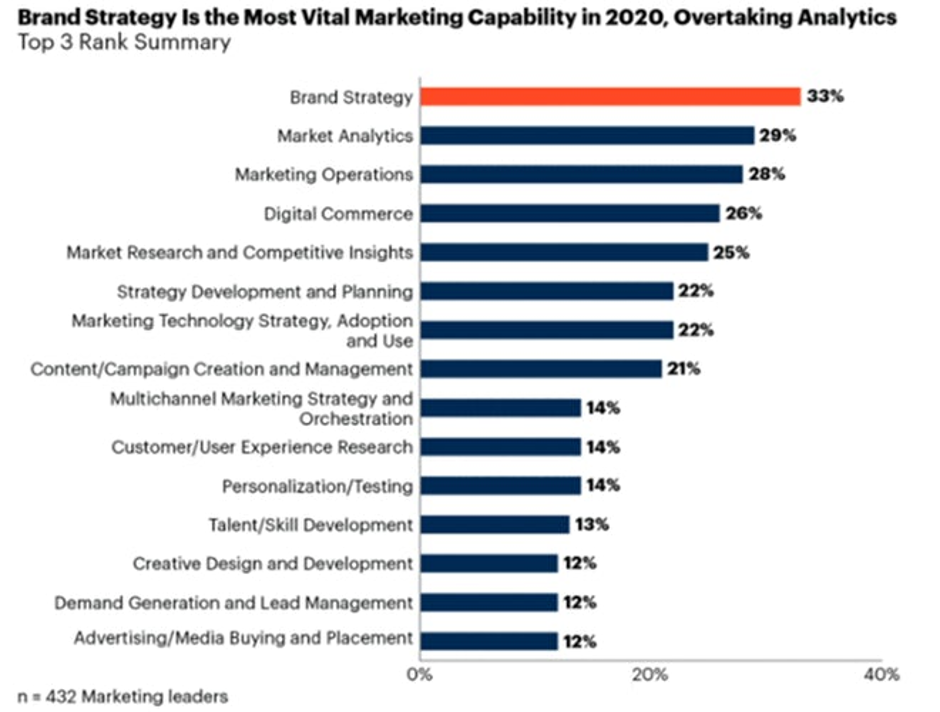Brand strategy and your North Star
25 February, 2021 Reading: 4:39 mins
We live in strange times. One of my coping strategies when I start to feel overwhelmed is to ask myself ‘if I could only get one thing done today, what would it be?'

We live in strange times. One of my coping strategies when I start to feel overwhelmed is to ask myself ‘if I could only get one thing done today, what would it be ?’ And if you’re a marketer feeling overwhelmed right now, that one thing may be as simple as getting down on paper: do I know what my brand stands for? Do I have a North Star?
What do you stand for, where are you going as a brand? Get that down on paper and agreed, then everything else becomes a lot clearer and the day-to-day decisions easier, from lead-gen tactics to channel choices. As industry guru Mark Ritson said : “This may be bad news for a lot of people, but you cannot have a ‘digital strategy’ or a ‘media strategy’ or ‘Facebook strategy’ in any real sense of the words. There is just a brand strategy, which then feeds the tactical choices that follow it.”
‘Where are you going?’ may seem a strange question – but what’s important is some form of long-term vision, as a way to steer the day-to-day. Nike realised back in the late 80s that standing for ‘we make great sneakers’ and incremental product improvement wasn’t going to differentiate them. They needed to stand for athletes, and the belief that anyone can be one and so ‘Just Do It’ was born. Ecover may make eco-friendly products, but they’re ‘leading a clean world revolution’. The principle is the same for any brand: don’t spend hours on a strapline but, on one page in 50 words or less (preferably about 20), set a North Star in your compass: a Why. A small corner of your buyers’ minds that you aim to own and enlarge long term and use this to help you make tactical decisions. Stay true to this: say Yes or No to tactics based on it. Then everything you do will build long term-value in that brand. And don’t worry, it will still help deliver against the crucial year-on-year KPIs but it will also show your Board the true value of marketing.
In the current environment it’s easy to lose sight of the bigger picture, to switch all long-term brand effort into the immediate decisions like which channels to activate, which leads to pursue but don’t let that overwhelm any thought of brand value and customer experience. There may be real fires to put out, real reasons to be concerned: but 30 years working agency and client-side (through two previous recessions) means I’ve seen first-hand how panic leads to paralysis, short-termism, knee-jerk tactical thinking, or one followed by the other, resulting in a sad downward spiral. Meanwhile budgets shrink, along with the perceived strategic value of the marketing team. As Mark Ritson confirmed again last month, the cure for this rising sense of panic really is a decent brand strategy, one that most people can understand. And it seems senior marketers agree: a 2020 Gartner survey of 400 CMOs and senior marketers shows brand strategy is also now regarded by them as the single most vital marketing capability.
So where to start? Keep it simple: brand strategy needs to align with business objectives, reassuring the business that its value starts here. I work through a set of questions:
- What marketplace am I competing in? (be precise)
- Who are my target audiences – describe and prioritise them
- What do I want to stand for within this, how do I want to position my brand?
- ….so what’s my vision or proposition?
It’s probably useful to have some recent research: reconfirming in your customers’ minds what pain you take away, and for whom exactly. What jobs does your service do for them, do they still need doing, and can you get them done with an offer that’s still compelling and competitive today? As well as the obvious competitor mapping, are there clear trends coming in your landscape – from changing demand to an emerging new channel – that may better meet your customers’ needs?
So, once you clearly state your purpose, and what you aim to stand for in your audience’s minds, you then ask, ‘how will we achieve this?’ This is when we start writing SMART goals that lead to quality execution. Having two to four tightly written goals also takes courage, because of the temptation to target all possible prospects everywhere, but many of the world’s great strategists, like Harvard’s Michael Porter, agree that ‘strategy is about choosing what not to do’.
As you work through this the four P’s from the 1960’s (Product, Price, Promotion and Place) remain applicable – yes, important details and ingredients have changed, but the general concept is as relevant. So, at any point you may want to pause and check, look through this four P’s lens and ask: is this clear?
Follow these steps and many decisions will get easier: your team will feel confident about who you’re really talking to, how they will become aware of your brand and the two to three things you want them to think when they do.
If you need help navigating to your North Star, then get in touch
Image (see below): [from Gartner CMO Spend Survey 2020]

